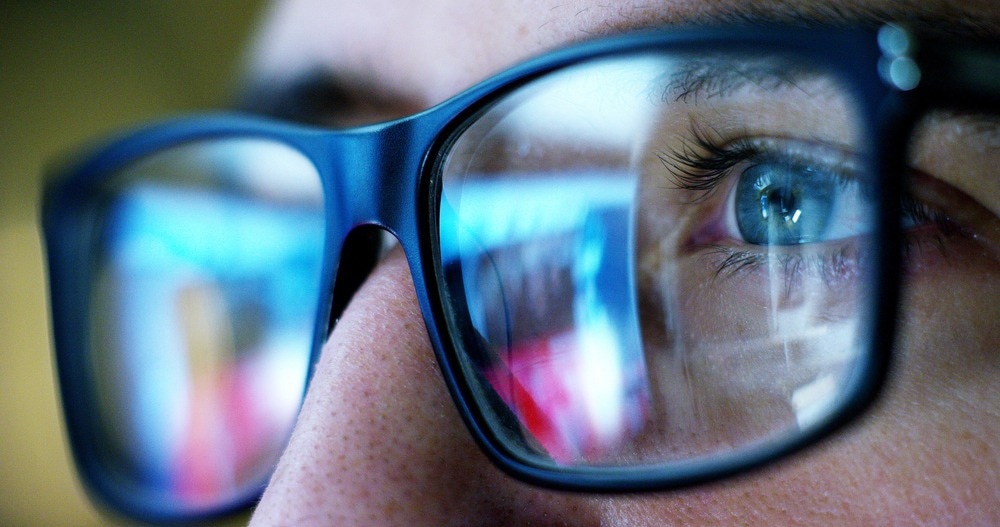In a recent study under review at the journal Molecular Medicine and currently available on the Research Square* preprint server, researchers in China investigate the role of phosphatidylinositol 3 kinase (PI3K)/ protein kinase B (AKT) pathway in causing metabolic disruptions and tissue injury among human corneal epithelial cells (hCECs) and corneal tissues of mice.

Study: Blue light exposure promotes reactive oxygen stress, apoptosis and suppresses viability, migration and wound healing of cornea via inhibiting PI3K/AKT signaling pathway in corneal epithelial cells. Image Credit: Kitreel / Shutterstock.com

 *Important notice: Research Square publishes preliminary scientific reports that are not peer-reviewed and, therefore, should not be regarded as conclusive, guide clinical practice/health-related behavior, or treated as established information.
*Important notice: Research Square publishes preliminary scientific reports that are not peer-reviewed and, therefore, should not be regarded as conclusive, guide clinical practice/health-related behavior, or treated as established information.
Background
Previous studies have reported that blue light exposure, which is between 400 and 480 nanometers (nm) in wavelength, can result in damage to various tissues, particularly the cornea and retina of the eyes. This damage can arise due to oxidative stress, mitochondrial dysfunction, apoptosis, retinal degeneration, and inflammatory processes.
Exposure to blue light can alleviate epithelial-mesenchymal conversion through impaired cellular autophagy, activation of the nuclear factor kappa B (NF-κB) pathway, and induce ocular dryness. However, whether the PI3K/AKT pathway is involved in the pathophysiology of damage is not clear.
About the study
In the present study, researchers explore the probable contribution of the PI3K/AKT pathway in mediating the effects of blue light exposure on the corneal tissues of humans and mice.
Quantitative reverse-transcription polymerase chain reaction (qRT-PCR), Western blot (WB), cell scratch assay, and cell reactive oxygen species (ROS) assays were performed. Blue light-induced corneal damage was assessed using corneal fluorescein sodium staining in vivo.
The duration of hCEC exposure to blue light was assessed using the cell counting kit-8 (CCK-8) assays. Further, Bcl-2 and Bax protein levels were determined.
To investigate the role of the PI3K/AKT pathway, hCECs were treated with LY294002, an inhibitor of the AKT pathway. Zona occludens 1 (ZO-1), N-cadherin (N-cad), and E-cadherin (E-cad) expression was assessed and the E-cadherin/N-cadherin ratio was calculated.
Results
Exposure to blue light promoted cellular apoptosis, increased ROS levels, and suppressed cellular migration, proliferation, and viability through PI3K/AKT pathway inhibition in hCECs in vitro. Furthermore, blue light exposure caused defects in the corneal epithelium and delayed wound healing in murine corneal tissues.
CK-8 assay findings showed significantly lower hCECs viability in the two-day group as compared to the zero hour group. Exposure to blue light followed by LY294002 treatment showed synergistic effects in lowering hCEC viability in the two groups.
Western blot analysis demonstrated a significant reduction in the p-AKT/AKT ratio in the two-day group, with significantly lowered phosphorylated ribosomal protein S6 kinase beta-1 (p-p70S6K)/p70S6K ratios in the one-day and two-day groups, thus indicative of PI3K/AKT/p70S6K signalling inhibition by exposure to blue light.
In comparison to the zero-hour dimethyl sulfoxide (DMSO)-treated hCECs, p-p70S6K/p70S6K and p-AKT/AKT ratios were markedly reduced in the zero-hour LY294002, two-day DMSO, and two-day LY294002 treatment groups. This similarly demonstrated PI3K/AKT/p70S6K inhibition among blue light-exposed hCECs.
Cyclin A2 and cyclin-dependent kinase 2 (CDK 2) levels, both of which are PI3K/AKT pathway substrates, were significantly reduced among the zero-hour LY294002, two-day DMSO, and two-day LY294002 treatment groups as compared to the zero-hour DMSO group. Thus, hCEC proliferation inhibition by exposure to blue light is attributed to the PI3K/AKT pathway.
Bax protein levels were significantly increased among the one-day and two-day groups, whereas Bcl-2 levels were markedly lowered in the two-day group. In addition, the Bcl-2 protein/Bax protein ratio was reduced in the one-day and two-day groups.
Exposure to blue light lowered hCEC viability and promoted apoptosis through time-dependent PI3K/AKT/p70S6K pathway inhibition. Blue light exposure significantly inhibited the formation of tight junctions in hCECs through PI3K/AKT inhibition.
The scratch assay findings indicated delayed wound healing among LY294002-treated hCECs and those exposed to blue light for two days. Among the zero-hour LY294002-treated, two-day DMSO-treated, and two-day LY294002-treated hCECs, ZO-1 and E-cad levels were significantly elevated, whereas N-cad levels were markedly lowered as compared to the zero-hour DMSO-treated group.
Significantly elevated E-cadherin/N-cadherin ratios were observed. Thus, PI3K/AKT inhibition was essential to blue light-induced lowering of hCEC migration.
The zero-hour LY294002-treated and two-day DMSO-treated groups considerably promoted hCEC apoptosis as compared to controls. Bax levels were elevated in zero-hour LY294002 and two-day DMSO groups; however, Bcl-2/Bax ratios were considerably lowered among zero-hour LY294002-treated, two-day DMSO-treated, and two-day-treated LY294002 hCECs. As compared to controls, zero-hour LY294002-treated and two-day DMSO-treated hCECs exhibited significantly elevated ROS expression.
After two weeks of exposure to blue light, mouse corneal fluorescence was significantly greater than that observed following a two-week exposure to environment light at 10.6 and 6.7, respectively.
Significant injury to the murine corneal epithelial tissues was observed following one week of LY294002 eye drop treatment or two weeks of exposure to blue light. Both treatments also resulted in wounds in the corneal epithelium. Taken together, these findings were indicative of blue light-induced damage to the murine corneal epithelial tissues through PI3K/AKT pathway inhibition.
Overall, the study findings showed corneal damage in humans and mice by blue light exposure through PI3K/AKT pathway inhibition.

 *Important notice: Research Square publishes preliminary scientific reports that are not peer-reviewed and, therefore, should not be regarded as conclusive, guide clinical practice/health-related behavior, or treated as established information.
*Important notice: Research Square publishes preliminary scientific reports that are not peer-reviewed and, therefore, should not be regarded as conclusive, guide clinical practice/health-related behavior, or treated as established information.